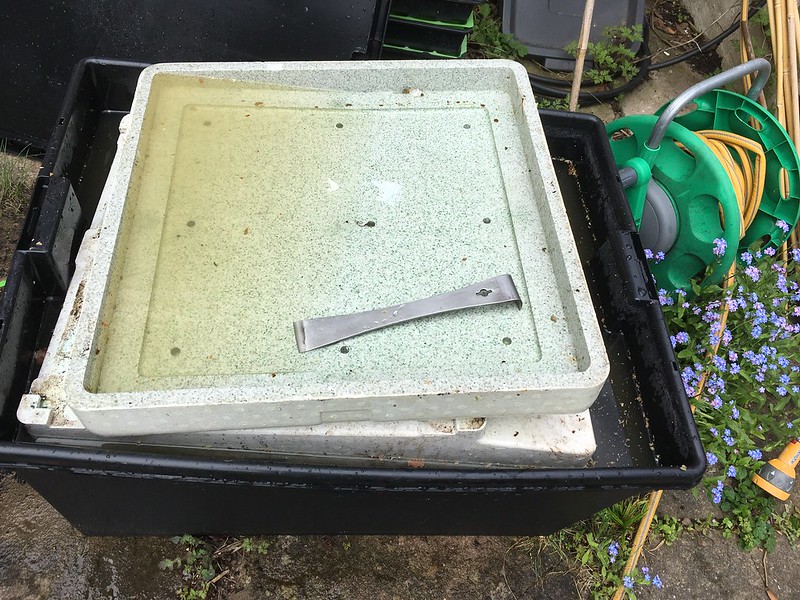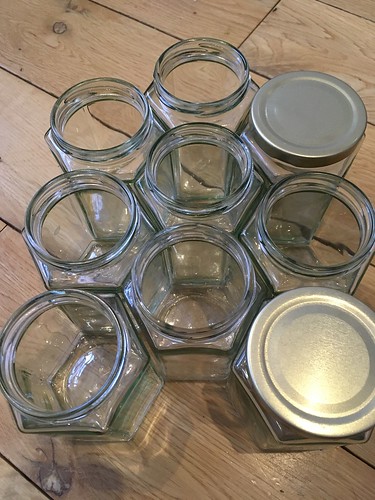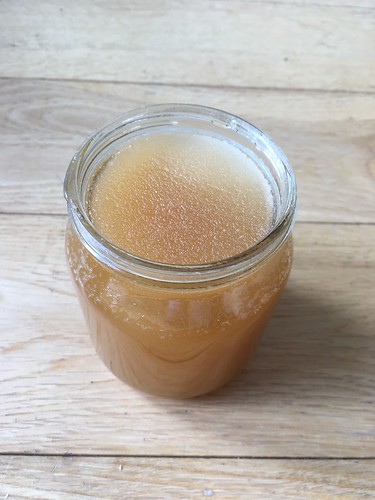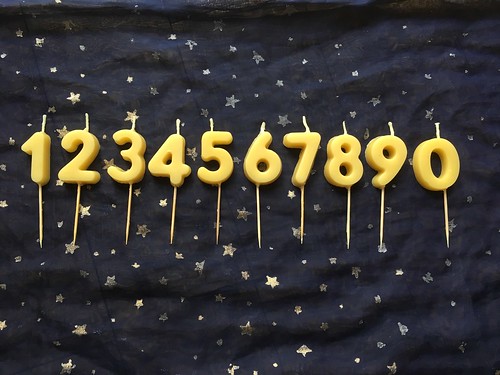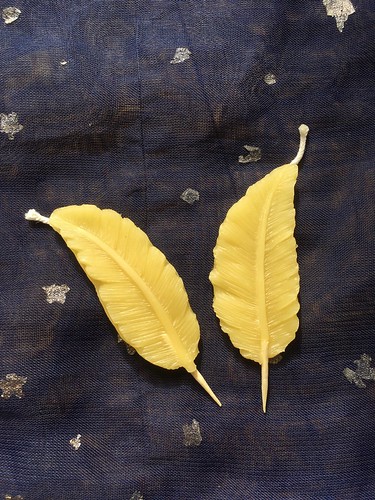The seemingly endless cold, wet weather this spring has prevented us from opening up the hives to see how our colonies are getting on so far this year. I don’t like inspecting our bees if it is too cold as it risks chilling the brood. Our roof top hives are pretty exposed, so we prefer a calm day too
We were finally blessed with sunshine this week and we went to work, carefully checking each hive for health, brood and stores. It always astonishes me how differently two adjacent hives can fare so differently. One, packed with sealed brood, nectar and honey, the other with barely any stores and the brood just starting to build up. A few swapped frames between hives quickly resolved the stores situation.
I was also really pleased to finally get hold of an enormous plastic box that is large enough to submerge a whole 14×12 brood box in. Our roof top hives are all poly hives and have to be washed to clean and disinfect them rather than the scorching that we do to our wooden hives. In the past I’ve faffed around with too small containers, only being able to soak a small area at a time. This new beast-of-a-box makes life so much easier and even has a snap on lid which holds the box under the water (they are extremely buoyant!).


